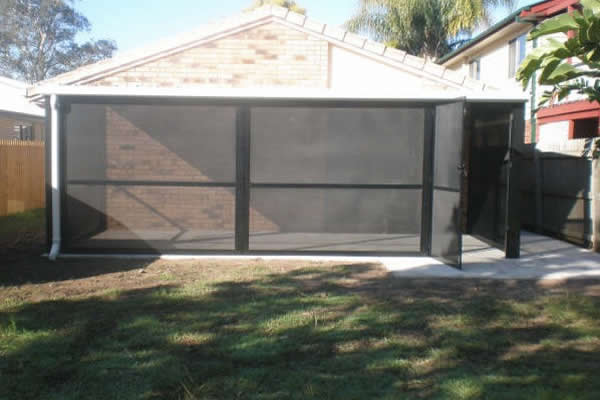

If the privacy screen will be freestanding, add additional support by attaching diagonal braces to the corners of the frame. Reinforce the joints with metal brackets or corner braces to add extra stability. Use a level to ensure that the frame is straight and square. Next, assemble the frame by attaching the pieces of lumber together using screws or nails. Make sure to use pressure-treated lumber, as it is more resistant to rot and decay. Then, cut the lumber to size using a saw. Measure the area where the privacy screen will be placed and determine the height and width of the frame.

The first thing to do is to determine the size of the frame. Luckily, I didn’t have to complete this step but if you don’t have a frame already, read on! In my case with my privacy screen, I already had the “frame” of the house to work with. The frame is the backbone of the entire structure, and it needs to be sturdy enough to support the weight of the planks and withstand the elements. Building the Frameīuilding the frame is the first step in constructing a DIY outdoor planked privacy screen. Once the wood is prepared, it is ready to be assembled into the privacy screen. Use a miter saw to cut the planks to the appropriate length and width. Next, measure the planks to the desired size using a measuring tape and pencil. If you do choose a lower grade wood product, make sure to inspect each piece of wood before you purchase it for defects. I chose to keep my project simple and budget friendly by purchasing simple pine deck boards. Other suitable options include pine, cypress, and spruce. Cedar or redwood are popular choices for outdoor projects due to their natural resistance to decay and insects. The first step is to choose the type of wood that will be used for the project. The preparation process involves selecting the right type of wood and measuring and cutting the planks to size. Preparing the Woodīefore starting the construction of the outdoor planked privacy screen, it is essential to prepare the wood for the project. Taking the time to carefully measure and plan the outdoor planked privacy screen will result in a beautiful and functional addition to any outdoor space. Make sure to use weather-resistant materials or applying a protective coating to ensure it lasts for years to come. Will additional hardware such as hinges or screws be required? Make a list of all necessary materials and tools before beginning the project. Will it be a simple, straight design or will it have angles or curves? This will affect the number of planks needed and the difficulty of the project. Next, decide on the design of the screen. This will help determine the size of the planks needed and how many will be required. Take note of the length, height, and depth of the space. First, measure the area where the privacy screen will be installed. I knew I was going to paint them, so why pay more for a more polished wood product? Measurements and Planningīefore starting any DIY project, it’s important to take accurate measurements and plan accordingly. I did not purchase high grade wood products.
#HANGING PATIO SCREENS INSTALL#
Always measure the area where you plan to install the screen before purchasing materials to ensure that you have enough wood.

The size of the wood will depend on the size of the privacy screen you want to create. When purchasing wood, it is important to choose pressure-treated boards as they are more durable and resistant to rot and decay. 1圆x10 pressure-treated boards ( I used 5/4″ by 6″ by 10′ pine boards).Attaching the Planks for the planked porch screenĬreating a DIY outdoor planked privacy screen requires a few essential materials.All fountains have a recirculating pump, so if you get an adjustable one, you’re sure to find a sound level that’s soothing. “The sound of rushing water might be inviting when guests arrive, but you don’t want to have to yell over the din at dinner,” says Glassman, who designed the wall and water feature shown here. Michael Glassman, a landscape designer in Sacramento, California, warns that it’s possible for a fountain to be too loud, which is just as disruptive as the noise you’re trying to hide. Keep in mind that flowing water becomes louder the farther it falls and the more tiers it travels over. These range from off-the-shelf, plug-in units that sit on a table or hang on the wall to custom designs that become a major focal point. In such cases, adding a fountain to your privacy plan can mask unwanted sounds with pleasant white noise. Or you may be bothered by intrusive traffic noise or buzzing AC compressors. Even if you’re not literally seeing eye to eye with the neighbors, you might still be close enough to hear their conversation.


 0 kommentar(er)
0 kommentar(er)
